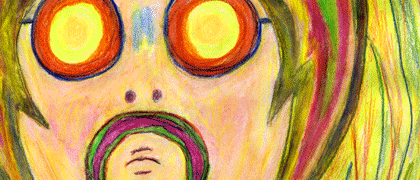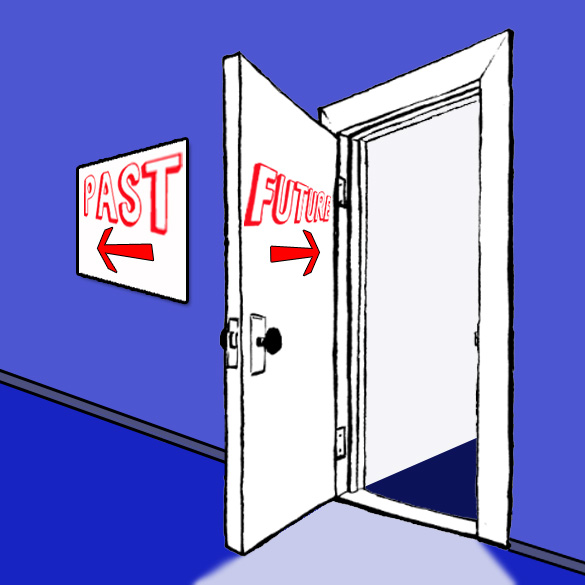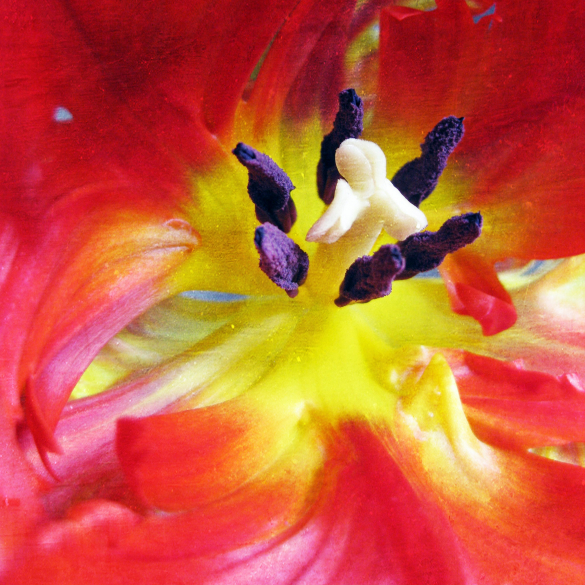By John W. Whitehead
10/4/2010
“Always know sometimes think it’s me/but you know I know and it’s a dream.”—John Lennon
 John Lennon was not just a great musician and songwriter. He was a dream-weaver who dared to imagine a world where human beings would put down their arms, stop warring and live in peace. “You may say I’m a dreamer,” Lennon sings in “Imagine,” “but I’m not the only one.”
John Lennon was not just a great musician and songwriter. He was a dream-weaver who dared to imagine a world where human beings would put down their arms, stop warring and live in peace. “You may say I’m a dreamer,” Lennon sings in “Imagine,” “but I’m not the only one.”
No, John Lennon was not the only one to dream of a world without hunger and war, but he was enough of a realist to know that change does not happen overnight. It takes people coming together for a common goal, working together in harmony, and committing to make the world a better place for all. This was Lennon’s dream. Thus, throughout his short and troubled life, Lennon’s message to the world—expressed in verse and deed—focused on peace, love, active resistance to the establishment, and speaking truth to power. Thirty years after Lennon’s life was prematurely ended by an assassin’s bullet, it falls to you and me to make Lennon’s dream a reality.
October 9 marks what would have been Lennon’s 70th birthday. In tribute, the following are my ten favorite John Lennon songs:
Rain. This song marks the first appearance of a soon-to-be signature compositional device for John Lennon: the backward coda. The famous backward coda that ends this song was actually an accidental discovery. After listening to the song at home, Lennon forgot to rewind the tape. When he played it again, Lennon heard the entire song played backwards. Delighted with the effect, Lennon wanted to release the song that way, but producer George Martin and Paul McCartney were not as keen on the idea. The compromise: the last 30 seconds of the song were recorded backwards. Combined with the surreal lyrics, this was a mindblower when the song was released during the summer of 1966. “Can you hear me that when it rains and shines, it’s just a state of mind,” sings Lennon. The psychedelic experience, as epitomized by LSD, was about to go mainstream.
Strawberry Fields Forever. When he was young, Lennon, who had been abandoned by his parents, would climb over the wall to Strawberry Fields, an orphanage behind his aunt’s house. There he would play in the gardens. This song is about childhood memories at a time when Lennon and McCartney were focusing on this theme. The lyrics are wistful and portray Lennon thinking out loud as his thoughts evolve: “I think a ‘no’ will be a ‘yes,’ but it’s all wrong. That is, I think I disagree.” By this time, Lennon’s style of writing had reached its surreal epitome: “Let me take you down ‘cause I’m going to Strawberry Fields. Nothing is real and nothing to get hung about.” When Lennon played the song for the other Beatles, engineer Geoff Emerich recalled, “There was a moment of stunned silence, broken by Paul, who in a quiet, respectful tone said simply, ‘That’s absolutely brilliant.’”
A Day in the Life. Sgt. Pepper’s Lonely Hearts Club Band is considered one of the greatest pop albums of all time. The album ends with a reprise of the title track that fades into the climactic classic “A Day in the Life.” The British Broadcasting Company banned this song, along with “Lucy in the Sky with Diamonds,” because of what the BBC believed were drug references. As a postlude, “A Day in the Life” sets the other songs on the album and the Beatles’ career in perspective. A collection of vignettes that are somewhat tragic, the song is punctuated with the phrase “I’d love to turn you on”—either a reference to drugs or the need to tune in to the Beatles’ message. No doubt drugs were an intended reference in “A Day in the Life.” As author Mark Hertsgaard writes, “Indeed, John and at least one other Beatle were tripping—or flying, as John put it—during the photo session for the Sgt. Pepper album cover.” The Beatles underscored the verses of the song with a dark, tumultuous orchestra crescendo. Lennon wanted the song to end with “a sound like the end of the world.” Thus, the Beatles simultaneously struck an E major chord on three grand pianos, drawing out the sound as long as possible with electronic enhancement. The effect of the crashing E major chord, followed by some 53 seconds of gradually dwindling reverberations, brings to mind nothing so much as the eerily spreading hush of the mushroom cloud—visions of nuclear holocaust.
I Am the Walrus. In my opinion, this song is John Lennon’s masterpiece. Lennon, a voracious reader, was inspired by the writings of Lewis Carroll, in particular the tale of woe from Alice’s Adventures in Wonderland, in which a band of young oysters are lured by the charms of the Walrus, who then begins to devour them. Obvious is the “goo goo g’joob” refrain which is the last line that Humpty Dumpty speaks when he falls to his doom in Alice’s Adventures. At times, Lennon said it was written on an acid trip, and at others he said he was inspired by the sound of an ambulance siren. Whatever the inspiration, the song is replete with amazing imagery: “Elementary penguin singing Hare Krishna. Man, you should have seen them kicking Edgar Allan Poe.” Producer George Martin, commenting on the song, said:
He took a leaf out of John Cage’s book, who long before had used a radio broadcast to create a “happening.” So we had a radio brought in, hooked it up to the recording console, and gave John the tuning knob to twiddle. In no time, he found what he wanted: a Shakespeare play, King Lear, in full flow, going out live. It was by then so late in the evening that we were probably the only people listening to Will’s drama; but it went into the mix all the same, and is there now forever.
Revolution. Paul McCartney made little effort to mark his distaste for some of Lennon’s more political compositions, specifically “Revolution.” However, as Beatles biographer Bill Harry writes, “‘Revolution’ meant more to John at the time than any song he’d written in years, and he was determined that it should appear as the A-side of the Beatles’ debut release on their soon-to-be launched Apple Records. Apart from marking a return to the high-adrenalin, no-frills rock’n’roll that had always remained his first musical love, ‘Revolution’ was the first Beatles song to constitute an explicitly political statement—which in turn is precisely why Paul felt so wary about it.” But consider the times. It was the summer of 1968. Several months before, Martin Luther King Jr. had been assassinated and student arrests and riots were erupting throughout the Western world. And Lennon didn’t want to remain silent. “I wanted to put out what I felt about revolution,” Lennon told Rolling Stone in 1970. And the message was nonviolent resistance instead of violent revolution. “You say you got a real solution. Well, you know, we’d love to see the plan. You ask me for a contribution. Well, you know, we’re all doing what we can. But if you want money for people with minds that hate. All I can tell you is, ‘Brother, you have to wait.’” As Lennon said in 1980: “The lyrics stand today. They’re still my feelings about politics: I want to see the plan….I want to know what you’re going to do after you’ve knocked it all down. I mean, can’t we use some of it? What’s the point of bombing Wall Street? If you want to change the system, change the system. It’s no good shooting people.”
Give Peace a Chance. In late May 1969, Lennon and Yoko Ono staged a bed-in for peace in a Montreal hotel. A journalist had asked John what he and Yoko were trying to do. “All we are saying,” John replied, “is give peace a chance.” Within hours, prompted by Yoko, Lennon had turned the phrase into a mantra. The verses are pure nonsense, spinning off rhymes from “Bagism” (“Shagism, dragism, madism…”) and “Revolution” (“Evolution, mastication, flagellation, reputations, integrations…”) and listing some of the celebrities who had joined the bed-in, together with others Lennon wished had done so (Timothy Leary, Tommy Smothers, Bob Dylan, Normal Mailer, Allen Ginsberg). On Sunday, June 1, Lennon, et al., began recording the song in his hotel room using a borrowed eight-track recorder with vocal help from Leary, Smothers, Ginsberg and others. “The companionable bedside choristers who joined him on ‘Give Peace a Chance’ had suggested an exhilarating new concept of recording and performing to John,” writes Philip Norman in his biography of Lennon.
Back in London, he and Yoko decided to keep alive the idea of a performing group that was not limited, like the Beatles, to a sacred four; not introverted, formula-bound, and hostile to outsiders, like the Beatles, but open to anybody, regardless of musical ability, appearance, age, or gender, and with as many or as few members as suited the moment. Its nucleus, moreover, would not be egotistical, quarrelsome humans, like the Beatles, but conceptual artworks which might have stepped straight from one of Yoko’s shows.
This would eventually become the Plastic Ono Band. And “Give Peace a Chance” became a central peace anthem for the anti-war activist movement and showed Lennon’s amazing influence. For instance, on November 15, 1969, during a peace rally in Washington, DC, folksinger Pete Seeger led nearly half a million demonstrators in singing Lennon’s “Give Peace a Chance” at the Washington Monument. “The people started swaying their bodies and banners and flags in time,” Seeger later recalled. “Several hundred thousand people, parents with their small children on their shoulders. It was a tremendously moving thing.”
Come Together. Originally written as a campaign song for LSD guru Timothy Leary, who was running for governor against Ronald Reagan in 1970, Lennon decided otherwise. And despite some legal wrangling because Lennon used a line from a Chuck Berry song, “Come Together,” as professor John Stevens notes, “is a tour de force in songwriting because” it “has only one section: verse/refrain. There is no bridge or chorus in a verse/refrain format. There is, in effect, nowhere to go.” Supported by a smoky, swampy, New Orleans blues-style musical setting, this song is a chant that, while riveting, is in Lennon’s words, “gobbledy gook.” But maybe more significant, this is the last song the Beatles recorded together as a unit. After the Let It Be sessions, it looked like the group was finished. Then they decided to do one final album, Abbey Road. It was in these sessions that the Beatles actually came together as a unit to produce the song. “If I had to pick one song that showed the four disparate talents of the boys and the ways they combined to make a great sound, I would choose ‘Come Together,’” George Martin said. “The original song is good, and with John’s voice it’s better. Then Paul has this idea for this great little riff. And Ringo hears that and does a drum thing that fits in, and that establishes a pattern that John leapt upon and did the [‘shoot me’] part. And then there’s George’s guitar at the end. The four of them became much, much better than the individual components.”
Instant Karma. On the afternoon of January 26, 1970, Lennon awoke from sleep with the words of a cryptic little song dancing in his head. “Instant Karma,” a hippie expression meaning instant punishment, struck a chord in Lennon’s mind because of his belief that we must pay for the wrongs we do in this world. Jotting down verses on the paper he kept by his bed, Lennon bolted downstairs and banged out the basic song that day. The next day, Lennon summoned George Harrison and others to Abbey Road Studios. “[John] said ‘I’ve written this tune and I’m going to record it tonight and have it pressed up and out tomorrow,’” Harrison recalled. “That’s the whole point—Instant Karma, you know.” With Phil Spector producing, the song is both a warning and a lament on the cosmic nature of the universe. “Instant Karma’s gonna get you. Gonna knock you right in the head. You better get yourself together. Pretty soon you’re gonna be dead.” And the plea for brotherhood: “Better recognize your brother, everyone you meet.” The chorus, like Lennon’s beliefs, returns to peace, nonviolence and optimistic togetherness. “We all shine on like the moon and the stars and the sun.” The message: what we see happening around us—war, violence, poverty, and mayhem—are all the consequences of our actions. But to Lennon, that’s not our purpose. As he asks: “Why in the world are you here? Surely not to live in pain and fear.”
Working Class Hero. Lennon revealed to Rolling Stone editor Jann Wenner that he hoped this song would become an anthem for “the workers” and those who keep them under their thumb. Lennon, by this time, was at war with the powers-to-be. “You gotta remember, establishment,” he said, “is just a name for evil.” And Lennon used this song as ammo against the establishment. Here Lennon addresses his audience like an actor playing a scene. The music is a low-pitched guitar thrum, a folk ballad. Talking rather than singing, Lennon resurrects past deprivations and grievances: “As soon as you’re born, they make you feel small…They hurt you at home and they hit you at school.” Taking a swipe at the war machine, Lennon proclaims: “There’s room at the top they are telling you still. But first you must learn how to smile as you kill.” The underlying message of “Working Class Hero” is that not only are we all enslaved like our forefathers were, but there is a new opiate of the masses: “Keep you doped with religion and sex and TV.” Dropping the “F” word twice, the virulence of every other word, it barely stands out except as a forceful reminder of the human condition. All in all, as Albert Goldman writes in his biography of Lennon: “The performance is one of Lennon’s greatest because instead of surrendering to the temptation to rant and scream, he restrains himself, making his points by lowering rather than raising his voice, his anger flashing forth for only a moment at the end of each stanza, like a spark struck from a spur.”
Imagine. “Imagine” is probably the most widely revered of Lennon’s songs. The restful opening notes of this song still strike deep chords in people of all beliefs, despite its explicitly secular message. As a child, Lennon attended Sunday School and sang in the choir. And subjects the song covers were themes that nagged Lennon all his life. “I’m a most religious fellow,” Lennon said shortly before his death in 1980. “I only now understand some of the things that Christ was saying in those parables.” But in 1971, religion to Lennon was something that causes conflict, so “Imagine” envisions a world without heaven or hell. Besides Yoko Ono, one source of inspiration was a prayer book given to Lennon by comedian and activist Dick Gregory. “Advocating positive prayer, the book advised that to receive anything from God, we must first imagine it for ourselves. This idea impressed John greatly,” writes author Paul Du Noyer. “The day before he died he was still expounding ‘projection of our goals.’ If we wish for a positive future we should exert our mental energy and visualize one. In 1980 he observed how this idea, once considered wacko, was now being adopted by everyone from business organizations to sports stars. If we conceive of the future as something violent, like Star Wars, then we run the risk of creating precisely that.”

